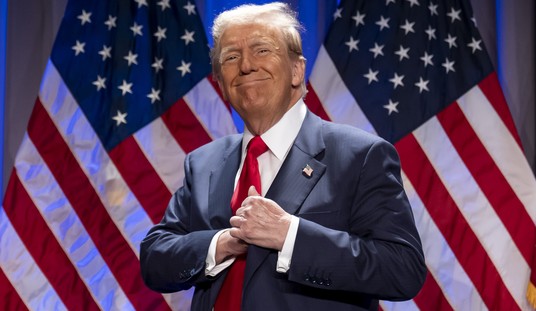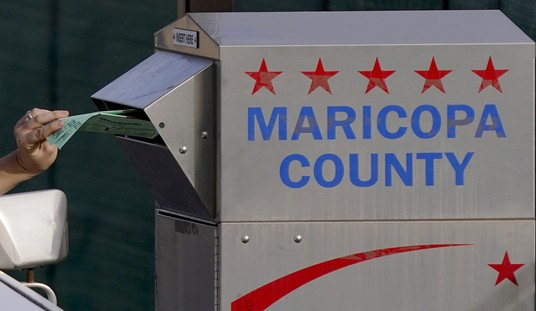As the daughter of a builder, I have always found architecture fascinating; not just beautiful facades or functionalism, but how buildings harmonize with land and each other; how they can be beautiful and useful at the same time; how ancient ruins echo through modern skylines. I love the math, the art, and the way people live within them. For this reason, I’ve always appreciated Donald Trump the builder.
Sure, he can be bombastic and earthy, and even a little gauche at times, but so are most builders, at least those who get their hands dirty. What’s undeniable is that he can both imagine beauty and bring it into being.
The Maker’s Instinct
There’s a creative through-line in Trump’s life that has nothing to do with politics: he likes to make things. Where other politicians traffic in abstractions and slogans, Trump traffics in marble, gold leaf, and steel. His eyes light up when he talks about design.
Most people have a hobby: model trains, paint-by-numbers, restoring old cars. For Trump, the hobby is building, on a scale that would bankrupt most men. The aesthetic impulse is the same. He builds not for utility alone, but because creation delights him.
Trump is famously hands-on. He doesn’t just sign contracts and delegate; he studies plans, argues over marble samples, sketches changes on blueprints, and directs finishes down to the lighting and trim. Builders who’ve worked with him describe a man who knows every hinge and cornice of his properties. He thrives in the dust and noise of construction sites, treating every project as both puzzle and performance.
He’s one of the few modern public figures who treats architecture as living art, not as sterile infrastructure.
Trump’s Portfolio of Beauty
Say what you will about his taste, but the man knows how to leave a mark.
Trump Tower, with its bronze-glass facade and soaring atrium waterfall, remains a Manhattan landmark forty years later — a bit of 1980s excess, yes, but also a testament to ambition and precision.
Mar-a-Lago is an even clearer window into his sensibility. The Mediterranean Revival estate, which might have crumbled without him, was painstakingly restored. The ballroom he added there, all crystal chandeliers and hand-painted ceilings, captures the blend of classical form and modern luxury that defines his style.
And the Old Post Office in Washington, D.C., which he rescued from decay and turned into a gleaming hotel, shows that his reverence for old architecture is more than talk. The Romanesque arches, the interior ironwork, the clock tower, all were preserved with an eye toward harmony.
Trump doesn’t create new styles; he resurrects old ones and amplifies them. His work has coherence, a recognizable aesthetic language: classical, symmetrical, meant to awe.
The Architecture of Feeling
Step inside Trump Tower, and you immediately understand what drives him. The five-story atrium is sheathed in warm Breccia Pernice marble, and down its rear wall runs a roaring waterfall, not a decorative trickle, but a living wall of sound and motion. You hear it before you see it. It transforms what could have been another cold Manhattan lobby into a kind of private cathedral, a vertical space that both shelters and awes.
That’s the emotional core of Trump’s architecture. He builds for effect. The waterfall doesn’t just impress; it soothes, masking the city’s chaos and replacing it with the rhythm of falling water. The vertical lines draw the eye upward, evoking the same subconscious awe that Gothic cathedrals once did. It is grandeur made intimate, theater as architecture.
And that, in miniature, is what the new White House ballroom aims to achieve. Trump isn’t content with sterile functionality. He wants movement, light, reflection, ceremony: a sensory experience. If the Trump Tower waterfall is to commerce what the Lincoln Memorial is to memory, then the White House ballroom will be the diplomatic equivalent: a stage that makes the experience memorable.
The Ballroom: Beauty Meets Diplomacy
The White House ballroom is designed in the neoclassical idiom, replacing the now-demolished East Wing section with a structure that aims to look as though it’s always been there. The renderings show Corinthian columns, arched Venetian windows, coffered ceilings, and subtle symmetry that ties directly into the Executive Residence’s Federal style.
Critics call it gaudy, but that’s more a matter of modern prejudice than design error. Americans have been trained to distrust ornament: to see beauty as wasteful and plainness as virtuous (thanks, Puritanism!). But the world doesn’t share that bias. Diplomacy runs on ceremony, and ceremony requires splendor.
Every other major power has a proper hall of state:
- France has the Élysée Palace.
- Britain has Buckingham’s grand halls.
- Russia has the Kremlin’s gilded chambers.
- China has the Great Hall of the People.
The United States has…tents. For decades, state dinners too large for the East Room have been forced out onto the South Lawn, under temporary canopies, surrounded by portable heaters in winter, and, worst of all, with portable restrooms discreetly tucked behind the shrubbery. Let’s be honest: they reek of logistical desperation and, well, worse things. I wouldn’t use one; why should a head of state?
And those tents, even the most elegant ones, are utterly at the mercy of the weather. Summer humidity turns them into saunas, while autumn storms and cold snaps send staff scrambling for heaters and mop buckets. Behind every smiling photo-op is a protocol officer praying the evening isn’t literally rained out.
The new ballroom ends all that. It provides a proper, permanent setting for America to host her peers with the dignity expected of a global power. Beyond its beauty, it’s technically sophisticated: state-of-the-art acoustics and sound systems designed for speeches and orchestras alike; built-in translation booths for multilingual events; integrated kitchens, broadcast infrastructure, and precise climate control to make even massive gatherings seamless. With space for up to 900 guests, it’s as functional as it is ceremonial.
This is not vanity; it’s necessity. A nation that still claims to lead the free world should not have to drag its guests through plastic and canvas. The ballroom restores architectural dignity to American diplomacy.
Harmony, Not Competition
For all the hyperventilating about Trump “defacing” the White House, the addition is proportionally modest and stylistically aligned. It will sit slightly below the Executive Residence roofline, preserving sight lines from the South Lawn and avoiding the visual dominance critics fear.
Architects can maintain harmony by using the same limestone texture and window spacing as the existing wings, by softening the cornice profile, and by treating ornament as echo rather than imitation. McCrery Architects, known for traditionalist precision, seem well aware of this.
And just as important, landscaping will make an enormous difference. Thoughtful placement of trees, hedges, and garden elements can visually nestle the ballroom into the existing grounds, guiding the eye toward the main house rather than away from it. Done properly, it will read not as competition, but as completion, a graceful extension of the White House grounds that enhances the overall harmony of the estate.
If they succeed, the addition will not overshadow the White House. It will enhance it.
The Urgency of Building
Trump’s sense of urgency is palpable. Construction began this fall, with demolition already finished. He wants the structure fully complete — inside and out — before the end of his second term. The timeline is tight but feasible:
- Demolition and foundation (late 2025)
- Structural build (2026–27)
- Interior finishing (2027–28)
- Landscaping and commissioning (2028)
Why the hurry? Because Trump knows what happens when he leaves office. The border wall’s construction was halted within hours of his departure in 2021. He won’t let the same fate befall this project.
He wants to see it finished, to walk through the ballroom himself, host an inaugural gala, perhaps even leave it to history as his addition to the American story.
The Price of Creation
Of course, there will be disruption. Tours are paused indefinitely. East Wing offices are displaced. Staff are grumbling about dust, detours, and noise. Preservationists will complain until the ribbon-cutting.
Those are the predictable costs of progress. The wing is already gone; something must go up in its place. What better than something that enhances the beauty and function of the nation’s most symbolic house?
The Democratic outrage machine will churn out headlines about cost and vanity, but it’s hollow theater. Every major civic project, from the Lincoln Memorial to the Capitol dome, has faced the same cries of waste and ego. Time has vindicated them all.
A Builder’s Legacy
Donald Trump will never be mistaken for an academic or a philosopher. But he is, at his core, a maker. He builds, restores, renovates, and envisions, guided by the ancient conviction that beauty and power belong together.
When the ballroom is complete, it will not only give America a dignified space for statecraft, but will also stand as proof that creation, not destruction, still moves history forward.
Trump’s critics call him a showman. They’re right. But showmen are often the ones who leave us monuments.
Editor's Note: The mainstream media continues to deflect, gaslight, spin, and lie about President Trump, his administration, and conservatives.
Help us continue to expose their left-wing bias by reading news you can trust. Join PJ Media VIP and use promo code FIGHT to get 60% off your membership.









Join the conversation as a VIP Member